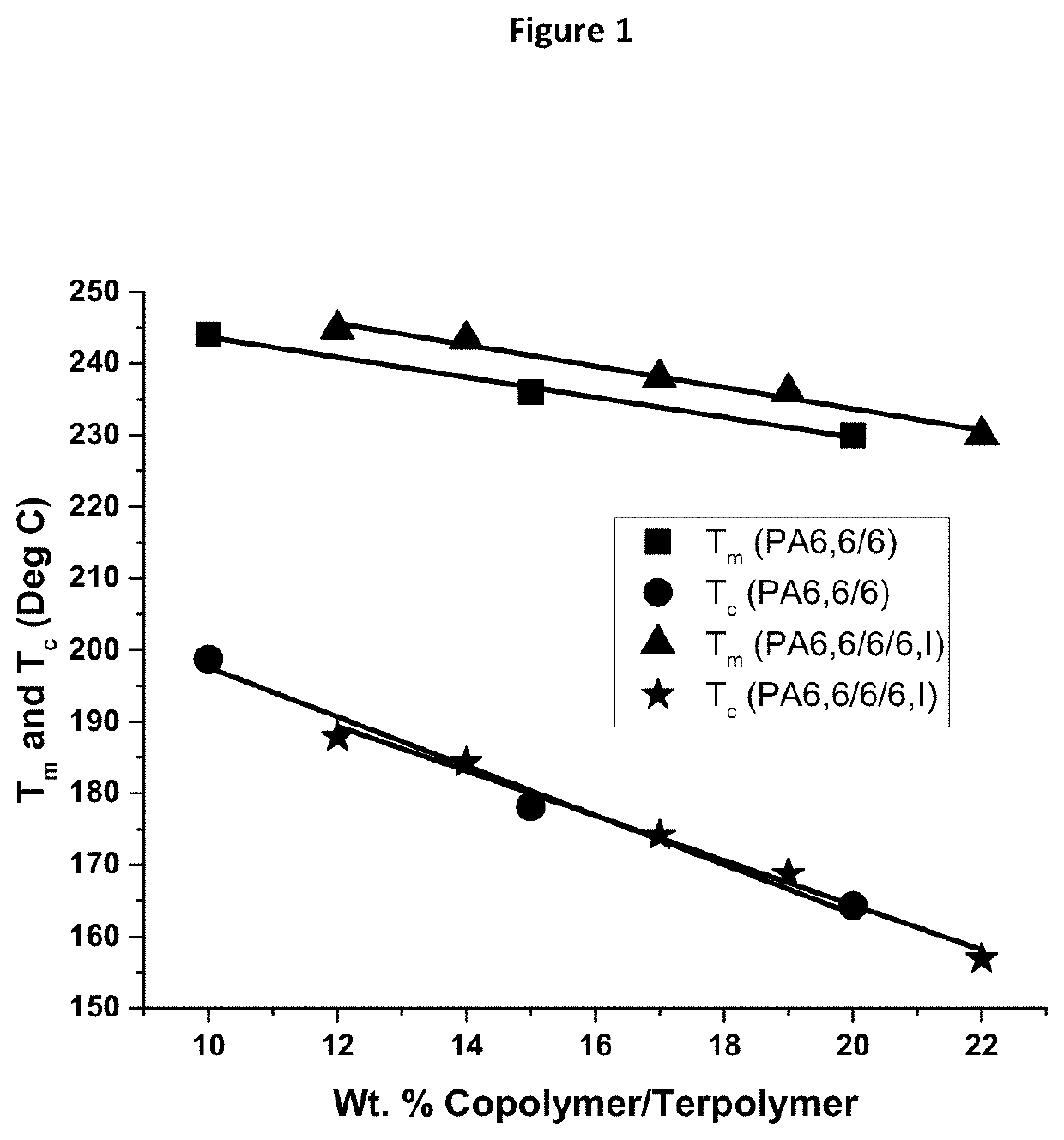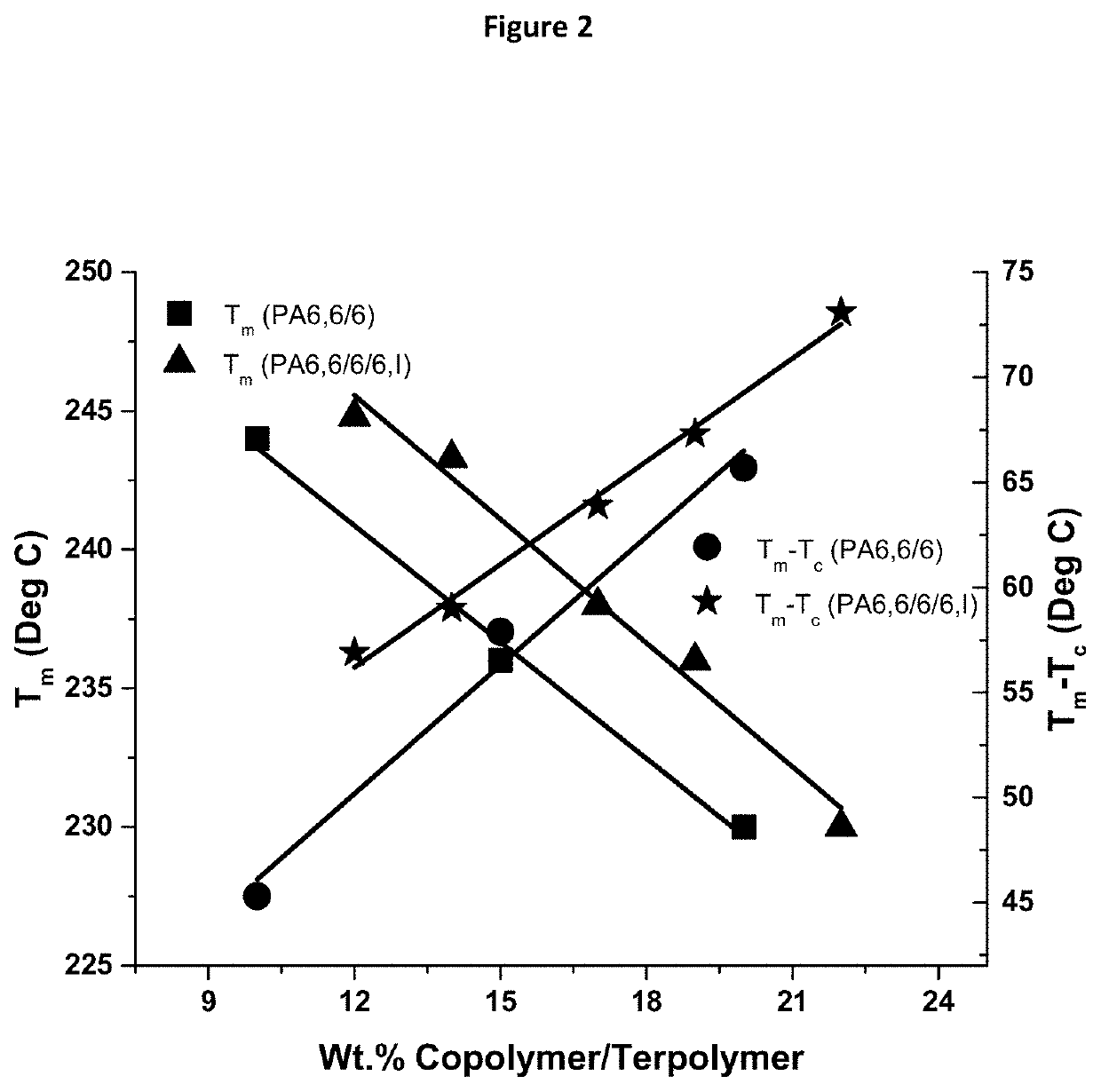Nylon terpolymers
a technology of terpolymer and nylon, which is applied in the field of nylon terpolymers, can solve the problems of affecting the quality of nylon terpolymer, the inability to provide satisfactory articles for blending of nylon6 and nylon6, and the inability to achieve homogenous materials that exhibit hybrid properties between those of nylon6,6 and nylon6
- Summary
- Abstract
- Description
- Claims
- Application Information
AI Technical Summary
Benefits of technology
Problems solved by technology
Method used
Image
Examples
example 2
aration
[0162]Films of polyamides, copolyamides and terpolymers were prepared by melting through a single screw extruder at temperatures between 230° C. and 300° C. Cast films were prepared by extruding through a slip die and rolling onto a chilled roll through winding. Film thickness was adjusted by adjusting winding speeds and adjusting the die gap. Blown films were prepared by extruding through a circular die and blowing up through an air ring and winding into a final roll. Film thickness was controlled by adjusting the die gap, extrusion speed, stretch ratio (both machine and traverse), and by controlling the air velocity.
[0163]Multilayer blown film was prepared by using a single layer of Nylon within a seven-layer line that consisted of seven separate extruders that feed into a stacked die to result in several multi-layer film multilayer film structures containing one to multiple layers of the polyamide resin of the present invention. In an exemplary embodiment, the components o...
PUM
| Property | Measurement | Unit |
|---|---|---|
| melting point | aaaaa | aaaaa |
| melting point | aaaaa | aaaaa |
| Tm-Tc | aaaaa | aaaaa |
Abstract
Description
Claims
Application Information
 Login to View More
Login to View More - R&D
- Intellectual Property
- Life Sciences
- Materials
- Tech Scout
- Unparalleled Data Quality
- Higher Quality Content
- 60% Fewer Hallucinations
Browse by: Latest US Patents, China's latest patents, Technical Efficacy Thesaurus, Application Domain, Technology Topic, Popular Technical Reports.
© 2025 PatSnap. All rights reserved.Legal|Privacy policy|Modern Slavery Act Transparency Statement|Sitemap|About US| Contact US: help@patsnap.com



